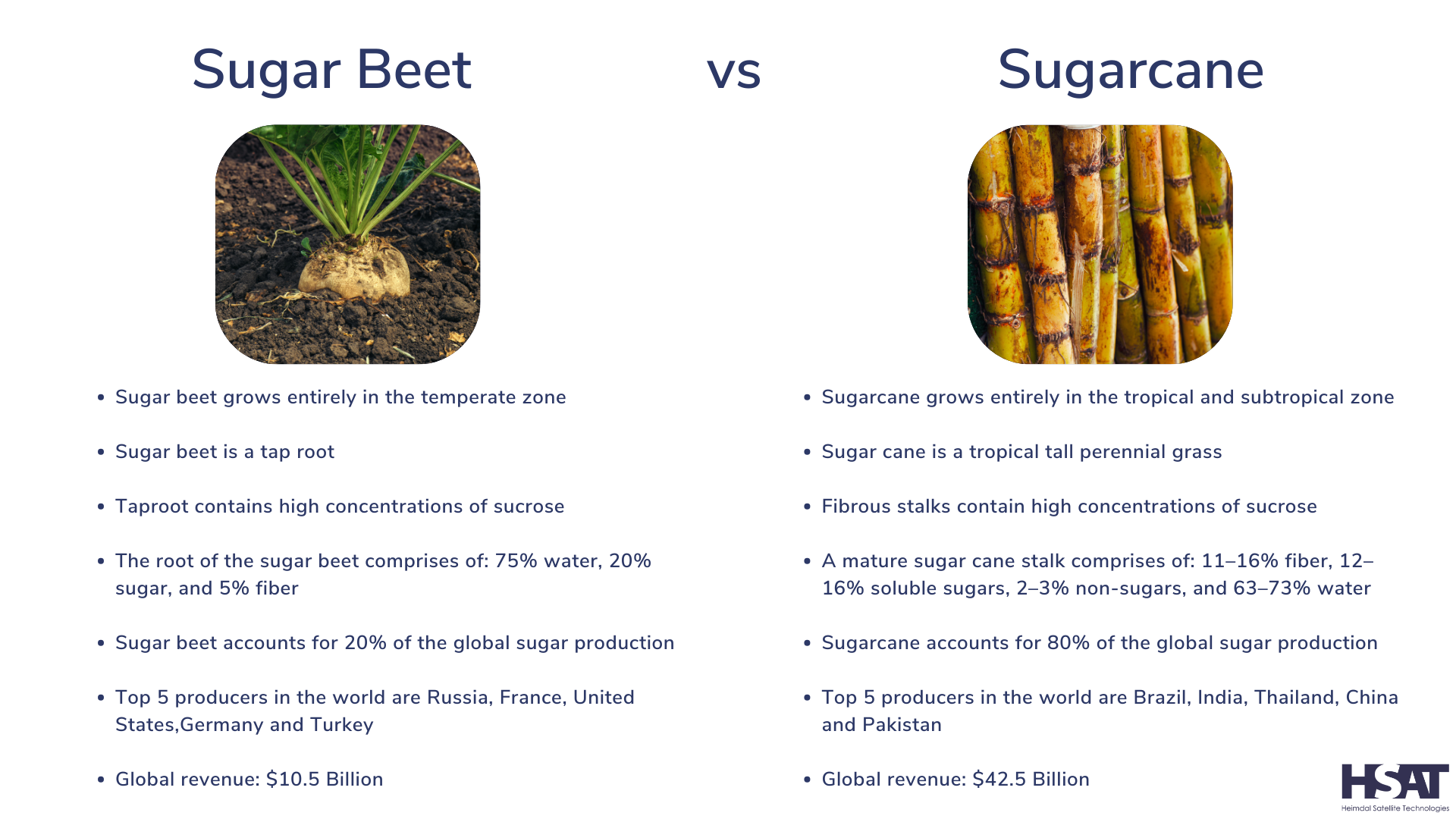Discover the Differences Between Beet Sugar vs Cane and Their Uses in Food
Discover the Differences Between Beet Sugar vs Cane and Their Uses in Food
Blog Article
The Fantastic Discussion: Beet Sugar Vs Walking Cane and Their Effect On Health And Wellness
The continuous argument bordering beet sugar and cane sugar raises critical inquiries regarding their corresponding health and wellness impacts and broader implications for customer choices. While both sweeteners share a similar chemical structure, their beginnings and processing techniques may affect not just nourishment but additionally environmental sustainability. As health-conscious individuals weigh the advantages of each option, the implications of pesticide direct exposure and farming methods enter into emphasis. This conversation invites us to think about not simply the sweet taste we pick, yet the far-ranging effects of those selections on our health and the earth. What might this suggest for future consumption patterns?
Review of Sugar Sources
Sugar, a commonly eaten sweetener, mainly originates from two primary sources: sugar beets and sugar walking stick. Sugar walking cane prospers in tropical and subtropical environments, with significant producers consisting of Brazil, India, and China.
On the other hand, sugar beets are mainly grown in warm regions, with substantial production in countries such as the United States, France, and Germany. The beets are harvested from the ground, cut, and subjected to a process that transforms the extracted juice right into granulated sugar. While both sugar resources inevitably produce sucrose, their farming practices, processing approaches, and geographic distributions vary markedly.
These distinctions can affect not only the environmental impact of sugar production yet likewise the financial elements of sugar prices and trade. Comprehending the origins of these sweeteners is essential for consumers and policymakers alike, as it lays the structure for informed discussions regarding their health effects and sustainability.
Nutritional Contrast
When examining the nutritional accounts of beetroot sugar and cane sugar, both resources share a comparable composition as they mostly include sucrose. Sucrose is a disaccharide, composed of glucose and fructose, and is in charge of the sweetness connected with both sugars. The refining processes for both beet and walking cane sugar yield items that are mainly pure sucrose, with very little traces of vitamins, minerals, or various other nutrients.
In terms of calorie content, both beet and walking cane sugars supply approximately 4 calories per gram. Neither kind of sugar supplies significant nutritional benefits beyond power provision, as they do not have vital vitamins or minerals. The presence of trace elements, such as magnesium, calcium, and potassium, can differ a little in between the two, largely due to the agricultural methods and soil problems in which they are grown.
Additionally, the glycemic index worths of beetroot sugar and cane sugar are comparable, suggesting similar effects on blood sugar levels. In general, from a dietary point ofview, beet and cane sugars are functionally equal, contributing primarily to caloric consumption without providing significant health benefits over one an additional.
Health And Wellness Effects
The wellness effects of consuming beetroot sugar and walking cane sugar warrant cautious consideration, especially offered the climbing occurrence of sugar-related wellness problems. Both kinds of sugar add similar caloric worths and can cause boosted threats of obesity, type 2 diabetes, and cardiovascular illness when consumed in excess. The body metabolizes both sugars into glucose, which can create spikes in blood glucose degrees, leading to insulin resistance in time.
While there is ongoing dispute concerning the glycemic index of these sugars, research studies suggest that both can negatively impact metabolic health and wellness if eaten in large quantities. beet sugar vs cane. Furthermore, the potential presence of pollutants in beet sugar, such as pesticides from standard farming techniques, raises further health and wellness problems. Conversely, cane sugar, specifically when minimally processed, may supply a somewhat more favorable profile because of its all-natural state
Additionally, the intake of sugarcoated, no matter the source, is linked to adverse health and wellness end results, consisting of dental problems and fatty liver disease. For that reason, small amounts is important, and people need to be conscious of their overall sugar intake from all sources, eventually focusing on whole foods over added sugars for ideal health and wellness outcomes.
Ecological Impact
Recognizing the health implications of beetroot and walking stick sugar also results in an examination of their ecological effect, which can substantially influence agricultural sustainability and eco-friendly equilibrium. Both sugar sources have distinct environmental footprints, shaped by their farming methods and geographical demands.

In contrast, beet sugar is normally grown in warm climates and often includes varied plant turnings. This technique can improve dirt health and decrease dependence on chemical inputs. Intensive beetroot farming can likewise lead to nutrient depletion and pest stress if not managed sustainably.
Both sugar types existing challenges and opportunities for environmental stewardship. Promoting lasting agricultural practices and liable sourcing can minimize their effects, ensuring that sugar production lines up with next page ecological conservation and long-lasting food safety.
Customer Preferences
Amid try this expanding awareness of health and wellness and ecological concerns, customer choices for sugar kinds are increasingly influenced by understandings of wellness advantages, sustainability, and honest sourcing. Beet sugar and walking cane sugar each existing special qualities that interest various customer demographics.
Health-conscious customers usually look at the dietary profiles of these sugars, seeking choices viewed as much less refined or more natural. Walking stick sugar, often considered as the traditional sugar, is occasionally favored for its regarded pureness and simplicity. In contrast, beetroot sugar, which is regularly stemmed from genetically changed plants, faces suspicion amongst those worried about GMOs.
Sustainability is one more significant factor affecting customer choices. As understanding of agricultural methods grows, several customers select items that line up with eco-friendly farming approaches. Cane sugar manufacturing, specifically when sourced from lasting farms, can appeal to eco-conscious purchasers.
Moral sourcing plays an essential function as well, with customers increasingly favoring products that sustain fair labor techniques. Certifications such as Fair Trade can enhance the appearance of walking stick sugar on the market. Eventually, customer preferences are formed by a complicated interaction of wellness, environmental, and honest considerations, driving need for both beetroot and cane sugars in varied markets.
Final Thought
Finally, the dispute between beetroot sugar and cane sugar incorporates various elements, consisting of dietary profiles, wellness implications, and ecological effects. beet sugar vs cane. While both sugars mainly contain sucrose and exhibit comparable calorie web content, problems pertaining to chemical usage in beet sugar and the environmental effect of cane sugar monoculture warrant cautious consideration. As consumers increasingly prioritize sustainability and wellness, educated choices relating to sugar usage become essential in advertising dig this general well-being and ecological stewardship

Report this page